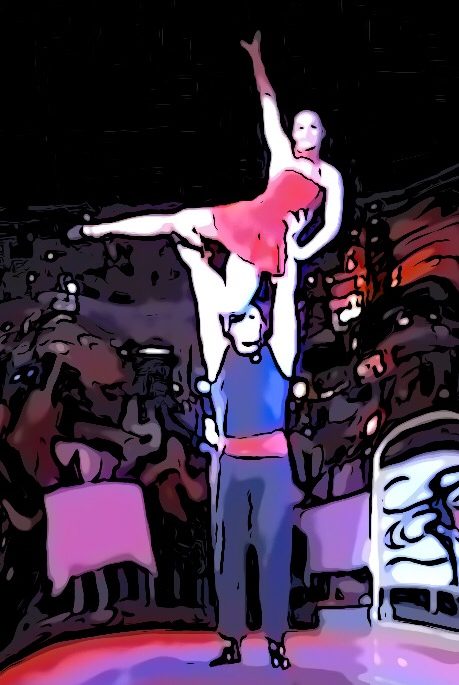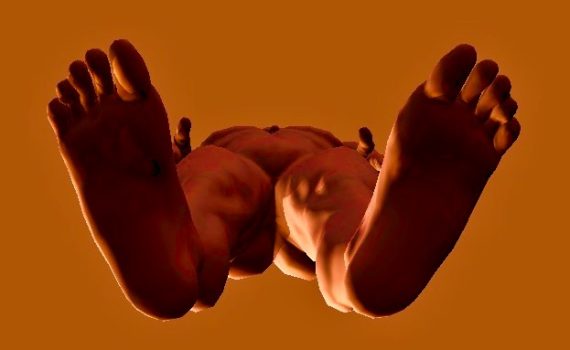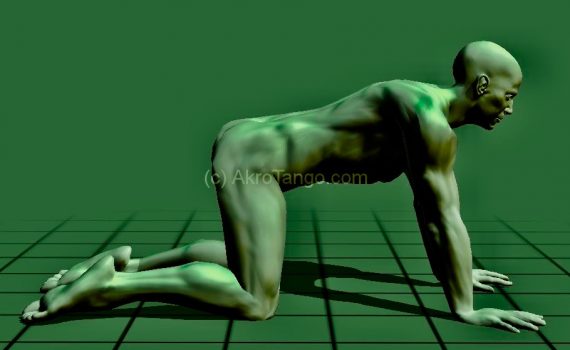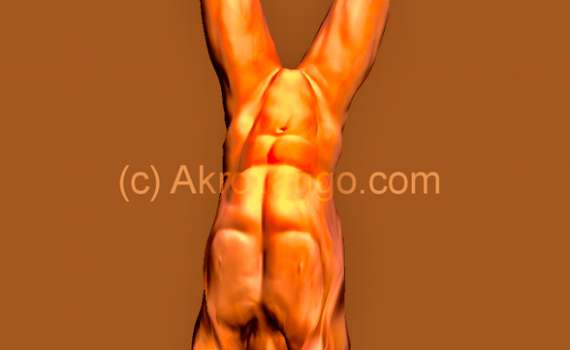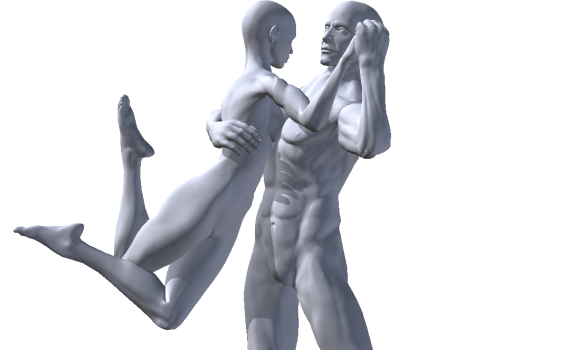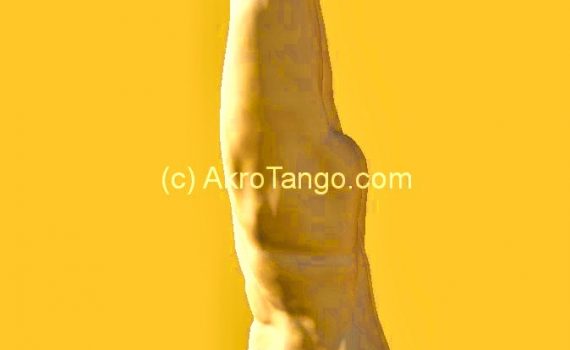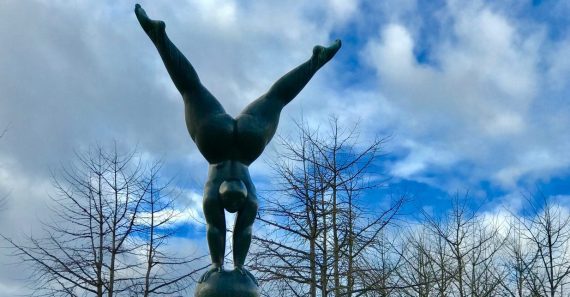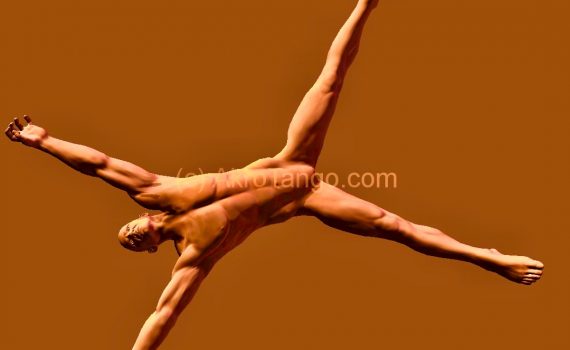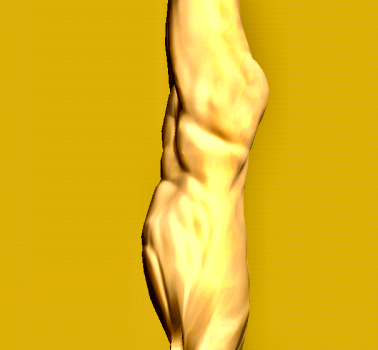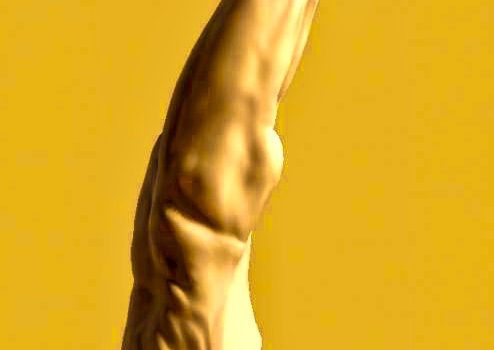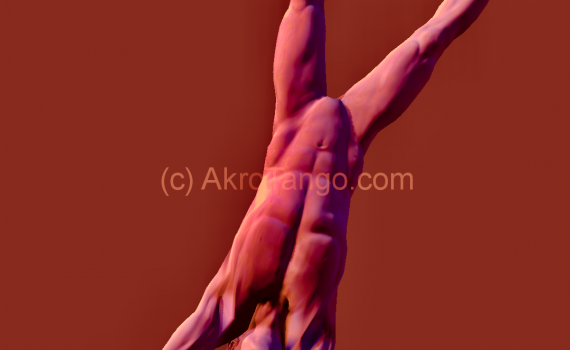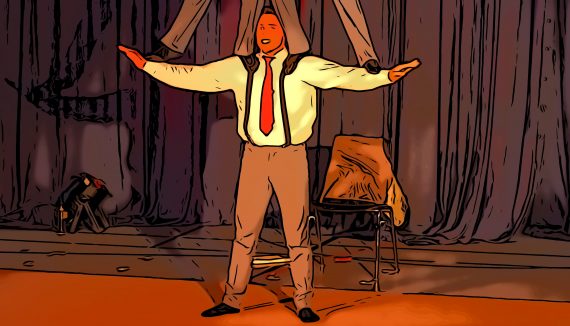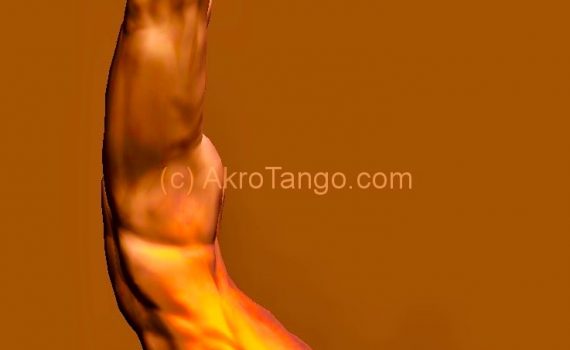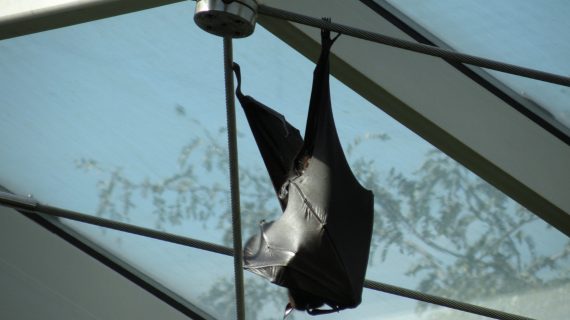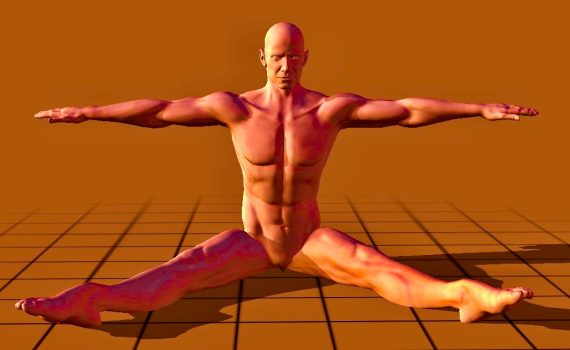Since the base can not grip with the feet, balancing the flyer by using the shear forces is not possible. The base must always remain under the center of gravity of the flyer. In the position “headfirst” the base also has no line of sight to the flyer. This actually destroys almost all possibilities of balancing through the base. Either the flyer is so experienced that it remains in the line of force without causing any shear forces, or another base takes over the balancing… Standing on the head or shoulder, the line of power is distributed on 3 contact […]
Yearly archives: 2018
The bank position (hip width knee position) forms a secure pedestal, because the distance to the ground is low (body center of gravity is deep) and a large support surface is available. The back is straight, arms and thighs are pointing almost vertically downwards. However, the shoulder should never come in front of the palm. The flyer should only load the base within the hip and/or shoulder area, because there the spine arched outwards and thus is stable against pressure. However, reactive jumps are to be avoided there as well. Especially inexperienced flyers tend reaching quickly the ground in the […]
When knot handstand one hand is further up and higher than the other! This results in an asymmetrical figure for the flyer (tends to be in the direction of screwed Einarmer), which affects up to the position of the feet. Important in partner acrobatics: – hands are on top of each other (watch out for your little fingers!) – the upper hand of the knot must not slip away – Both arms are stretched – the head is above the palm of the upper hand.
The lift (elevate) is an important element of the Tango Acrobatico, which is enjoying increasing popularity. But not all acrobatic performances with tango music belong in this category. In my understanding, it is not tango, as long as there is no tango-typical connection danced in the couple. And as long as the lady is not levitated in a controlled manner, it is not acrobatics. The border is certainly fluid, because a good couple of acrobatic will always have a good connection and a good tango couple will generate the hovering with ease. Ultimately, everyone has to decide for himself whether […]
In principle, the headstand is placed on the forehead or at the front part of the skull (see also Base – Balance on the head). Of all the flyers known to me, however, the position with a long neck is preferred. For this purpose, the contact-point / pressure-point on the head is centered on the hairline. It is important that the cervical spine can hold a straight position… straight in the body, but diagonally in the room! The supported headstand can not stand straight in the room, as a residual pressure remains on the hands and thus the center of […]
For the balance of this position, the shoulder is significantly involved. The shoulder is a floating joint, i.e. she has no firm connection with the trunk skeleton. There are exactly 2 positions wherein the shoulder is fixed: 1) pull the arms all the way to the hips (until the collarbone is horizontal) or 2) pull your shoulders to your ears (until no finger fits between them). Both positions are not natural and require a lot of training! A ballet dancer trains for it daily for years. Amazingly, a good body control while standing is no guarantee for just as good […]
The flag is due to the pull-pressure balance a form of the libra. The flag in handstand tends very large shear forces to generate. therefore, it is for the base necessary to a very stable pressure point to offer. Unfortunately is not a base so stable as a pole … Since the pressure point is always below the pulling point, the 2 possible pressure points while the base is standing are the lower leg from the back or the thigh from the front. Thus the only possible pulling points left are the shoulder or the hand. Once the flyer gets […]
The Handstand (HS) offers each Flyer 2 challenges, namely the art of balance and the way to get in the handstand. While the balance is essential for the solo artist, for the partner acrobatics the way is often the bigger hurdle. For the balance through the base it is sufficient if the flyer can hold its shape as soon as it reaches the position. The solo artist has to balance by himself. Challenge number 1: The Art of Balance In contrast to the standing tricks, necessary corrections of the base during balancing the handstand are reaching very delayed or not […]
Getting to stand on forearms on the ground the flyer has to push himself out of the headstand. To do this, the flyer must actively open the shoulder and tilt the body backwards at the same time. Possible shapes: 7 or Mexican. There is a risk of tilting in the back, without being able to twist off. A base does not have many possibilities to bring the flyer safely to the ground again. This position on a base is really heavy, looks modest and is very dangerous at the same time. That may be the reason why I’ve never seen […]
The Einarmer has the highest difficulty in the balance, as a shift in all directions is possible. The entry into the Einarmer is usually on the handstand. The critical moment is when the flyer releases its 2nd hand. Here, the smallest impulse leads to unwanted shear forces. 1st start position: – Flyers in handstand, – shoulders completely pushed out (if possible until contact with the ears) 2. The flyer starts from this position and can be e.g. tilt to the right. Important: a) Both arms are always pushing slightly outwards, never inwards !!! b) There remains a little weight on […]
The throw is a dynamic trick in which the flyer has also be caught again, even if he lands on the ground. The throw bears much resemblance to a rocket launch … A jolt during the throw upsets and deforms the flyer. The result is shear forces that pull the flyer out of the line of force (→ a real rocket does not move a millimeter after ignition) Direction and rotation are initially the responsibility of the base, corrections of the flyer are not helpful (→ the rotation of the earth is an important component of the rocket launch) The […]
The base has the correct posture for the standing position when lying on his back. The feet and shoulders should be slightly off the ground. As soon as the middle back rests completely on the floor, the abdominal area is closed and the body tension optimal. The head should stay above the spinal column if possible, in some positions of the flyer there are adjustments necessary. A good body tension and a good coordination of knees and hips are the most important topics that a base should learn while balancing in the standing so that he never gets into the […]
The position is similar to the scorpion-handstand of the flyer, as the head is actively pulled out. The beginning is usually via a libra, which at the end the flyer can let go, e.g. lying, sitting, with headstand or one-armed in the neck. An unfavorable weight distribution of base and flyer can be recognized by the fact that the shoulder is not over the middle of the hand. The base keeps his own center of gravity as close to its hands as possible (as he is usually heavier), which causes a barely avoidable hollow cross … Balancing the one-armed […]
In principle possible in the headstand, shoulderstand or handstand. Still not very advisable, as the balance organ really needs a very long time to achieve a stable balance with the head downwards. Everyone can estimate the effort themselves … How long did it take to stand a handstand? How much training was needed to balance him freely? And how long was the way to the one-armed? And now you want to balance a flyer on top of it? Even the one-armed handstand is easy in comparison to that!
In this position, the base has only one way to balance the flyer: With retracted chin directly over the neck (long neck). The base looks very grim, but can balance with the neck, if only very limited. In this variant, the base has no visual contact. Corrections come out of the middle of the body, so that the neck will not sheared A good preliminary exercise for the base is the free headstand on the ground. Well known circus duos are doing this one-armed handstand. This then turns 360 degrees with the flyer… very visible at the Peres Brothers (video […]
